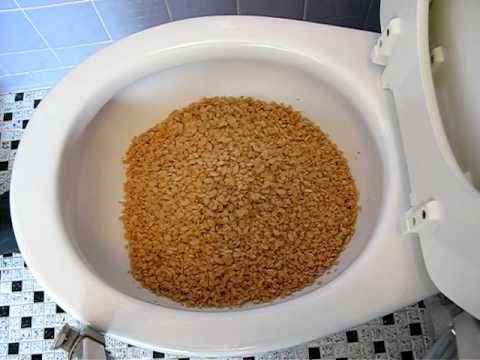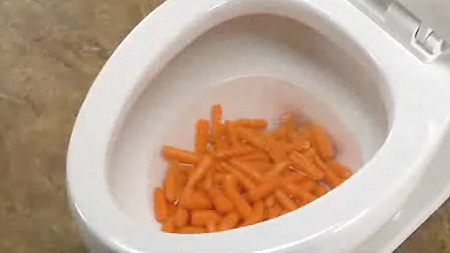Just how do you actually feel on the subject of Is it safe to flush food (especially rice) down the toilet??

Introduction
Many individuals are typically confronted with the issue of what to do with food waste, especially when it pertains to leftovers or scraps. One common question that develops is whether it's okay to flush food down the bathroom. In this short article, we'll look into the reasons why individuals may take into consideration purging food, the repercussions of doing so, and alternate methods for proper disposal.
Reasons why individuals could take into consideration purging food
Absence of recognition
Some people may not recognize the prospective injury brought on by purging food down the toilet. They may incorrectly think that it's a safe method.
Ease
Flushing food down the bathroom may look like a fast and simple option to taking care of unwanted scraps, particularly when there's no nearby garbage can available.
Laziness
In some cases, individuals might just select to flush food out of sheer negligence, without considering the consequences of their actions.
Consequences of flushing food down the toilet
Environmental effect
Food waste that ends up in rivers can contribute to contamination and injury marine communities. In addition, the water utilized to purge food can stress water resources.
Pipes problems
Flushing food can bring about blocked pipelines and drains, causing expensive plumbing fixings and aggravations.
Kinds of food that should not be flushed
Fibrous foods
Foods with fibrous textures such as celery or corn husks can get tangled in pipelines and trigger clogs.
Starchy foods
Starchy foods like pasta and rice can soak up water and swell, leading to obstructions in pipes.
Oils and fats
Greasy foods like bacon or cooking oils should never be purged down the toilet as they can solidify and cause clogs.
Proper disposal methods for food waste
Using a waste disposal unit
For homes furnished with garbage disposals, food scraps can be ground up and purged through the plumbing system. Nevertheless, not all foods are suitable for disposal in this manner.
Recycling
Certain food packaging products can be recycled, lowering waste and reducing ecological influence.
Composting
Composting is an environmentally friendly means to deal with food waste. Organic products can be composted and utilized to enrich dirt for horticulture.
The importance of appropriate waste management
Lowering environmental damage
Proper waste management practices, such as composting and recycling, aid lessen contamination and preserve natural deposits for future generations.
Shielding plumbing systems
By avoiding the technique of flushing food down the toilet, homeowners can prevent expensive plumbing repair work and keep the stability of their plumbing systems.
Conclusion
Finally, while it may be tempting to flush food down the commode for ease, it's important to recognize the prospective consequences of this action. By embracing correct waste monitoring techniques and getting rid of food waste sensibly, individuals can contribute to much healthier pipes systems and a cleaner atmosphere for all.
FLUSH FOOD DOWN THE TOILET?
FLUSHING FOOD CAN CAUSE BLOCKED DRAINS IN YOUR HOME
All of the plumbing fixtures in your home are connected to the same sewer pipe outside of your home. This outdoor sewer pipe is responsible for transporting all the wastewater from your home to the Council sewer mains. Even small pieces of food that go down the kitchen sink can cause problems for your sewer. It should therefore be obvious that flushing larger bits of food, such as meat, risks a clog in either the toilet itself or the sewer pipes. Flushing greasy food is even more problematic because oil coagulates when it cools, coating the interior lining of your pipes.
THE TOILET IS NOT A BIN
Food isn’t the only thing that people shouldn’t be flushing down the toilet. People use the toilet to dispose of all kinds of things such as tampons, makeup wipes, dental floss, kitty litter and even underwear. Water goes to great lengths to educate residents about the high costs and stress placed on wastewater treatment systems simply from people flushing the wrong stuff down the toilet. It costs taxpayers millions of dollars each year, and homeowners thousands in blocked drain repairs.
FLUSHING FOOD IS A WASTE OF WATER
Flushing food is a waste of our most precious resource - water. In June this year Level 1 water restrictions were introduced to protect water supply from drought conditions. Much of New South Wales continues to be affected by prolonged drought with recent figures revealing up to 97 per cent of the state remains in drought. Depending on whether you have a single or dual flush toilet, every single flush uses between five and 11 litres of water. In the current climate this is a huge amount of water to be wasting on flushing food that should be placed in the bin (or better yet, the compost).
https://www.jabplumbingsolutions.com.au/blog/can-you-flush-food-down-the-toilet

I discovered that write up on Is it safe to flush food (especially rice) down the toilet? while perusing the search engines. Are you aware of someone else who is enthusiastic about the topic? Feel free to share it. Many thanks for taking the time to read it.
Visit The Following Page